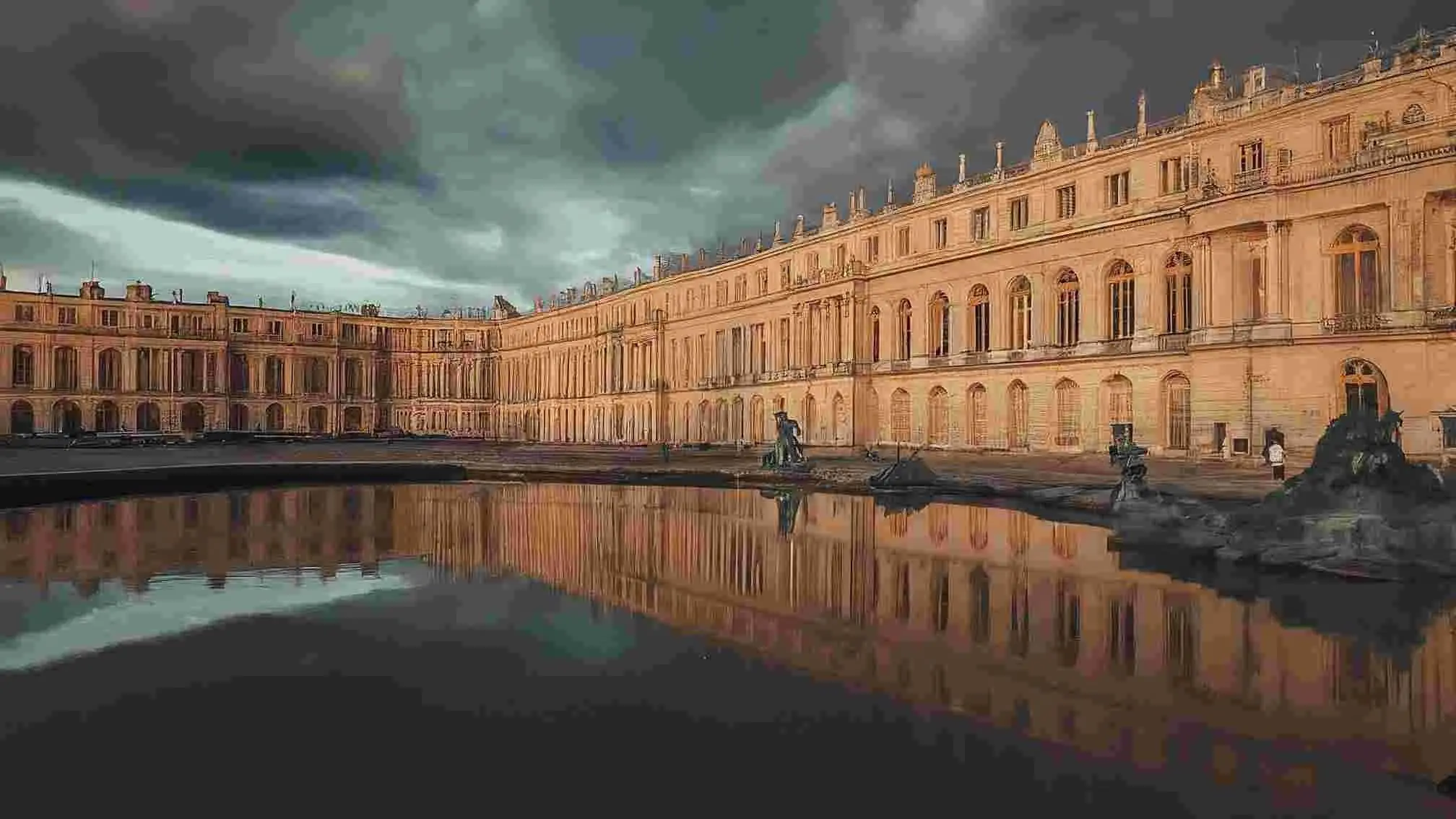
Introduction to the main palace and gardens
1. Marble courtyard
The marble courtyard is the first front entrance to the Palace of Versailles that most people see, and it is a small square enclosed on three sides. The central building, which was originally the hunting palace of Louis XIII, was remodeled by Louis XIV to retain the original red brick walls and add marble sculptures and gilded decorations. The courtyard floor is decorated with red marble. The first floor of the front of the courtyard is the private room and the salon, and the second floor is the king's bedroom.
2. Apollo Hall
Also known as the Helios Room, it was the throne room of the kings of France. The decoration is extravagant and beautiful, with gilded carved bas-reliefs on the ceiling, dark red filigree trimmed velvet walls, and a 2.6-metre-high throne cast in sterling silver at the centre, resting on a high platform covered with a crimson Persian carpet. Because Louis XIV called himself the "Sun King", the main halls of the Palace of Versailles were named after the planets that orbited the sun.
3. Hall of Mirrors
Also known as the Mirror Gallery, it is in the south of the War Hall and borders the garden in the west. The particularly famous hall of the Palace of Versailles, converted from a loggia. On one side are 17 huge floor-to-ceiling glass windows facing the garden, and on the other side are a huge mirror surface made up of 483 mirrors. On the vaulted ceiling of the Hall of Mirrors is a huge oil painting by Le Blanc, which is swaying and imposing, showing a picture of the turbulent history. The ceiling features 24 huge bohemian crystal chandeliers and an oil painting extolling the merits of the Sun King. In the center of the east side of the hall are the four gates leading to the King's Quarters. During the time of Louis XIV, the furniture in the Hall of Mirrors and the decoration of flowers and bonsai were also made of sterling silver, and grand masquerade balls were often held here.
4. King Suite
Located on the east side of the main building. In the center is the king's bedroom, with a gold-and-red brocade bed and an embroidered canopy, surrounded by gilded balustrades, and a huge relief on the ceiling entitled "The Guardian King of France Sleeps". It was the center of political activity at the Palace of Versailles. To the north of the palace is a small conference room, and to the south is the bull's-eye room, named after the bull's-eye shaped skylight above the gate leading to the king's bedroom, where princes, nobles, and ministers waited. The east of the bull's eye hall is the large waiting room and the guard room.
5. Queen's Suite
Located on the south side of the main building, it includes seven rooms, including the queen's bedroom, the queen's private room, the queen's waiting room, the palace lady's retreat room, and the queen's guard room. Downstairs from the Queen's Suite is the Apartment du Dauphin.
6. Grand Trianon
Built in 1687 by Louis XIV for his mistress, Madame de Madame de Montenon, it has only one floor and a relatively modest interior. During the time of Louis XIV, kings sometimes tired of the lavish Palace of Versailles would also live here. From 1805 to 1815, Napoleon often lived here.
7. Petit Trianon
Louis XV built it for his queen. It is a typical classicist style building, and the main rooms include a large salon, a small salon, a painting studio, a bedroom, a dressing room, etc. Nearby, there is a Swiss farm built by Louis XVI for Queen Marie Antoinette, with thatched huts, mills, sheepfolds, and the queen often dresses up as a country shepherdess.
8. Outdoor garden landscape
The main building of the Palace of Versailles covers an area of 11 hectares, while the outdoor landscape is almost 10 times larger – about 100 hectares, and it is one of the most famous classical gardens in France. As mentioned earlier, the theme building of the Palace of Versailles is in the absolute symmetrical style of the classical style, and similarly, the outdoor garden is also designed in the "central axis" layout, which symmetries the building into the landscape layout of the whole garden. In the main landscape structure of the whole park, a large number of canals and canals have been dug as static water features. Louis XIV is also said to have staged a live show on the canal that mimicked the Battle of Venice. These regular water surfaces add vitality to the whole park.
Conclusion
After introducing so much, you must already have a certain understanding of the Palace of Versailles, and it is recommended that you can go to Paris in person if you have time to experience the great treasure of human art of the Palace of Versailles.
